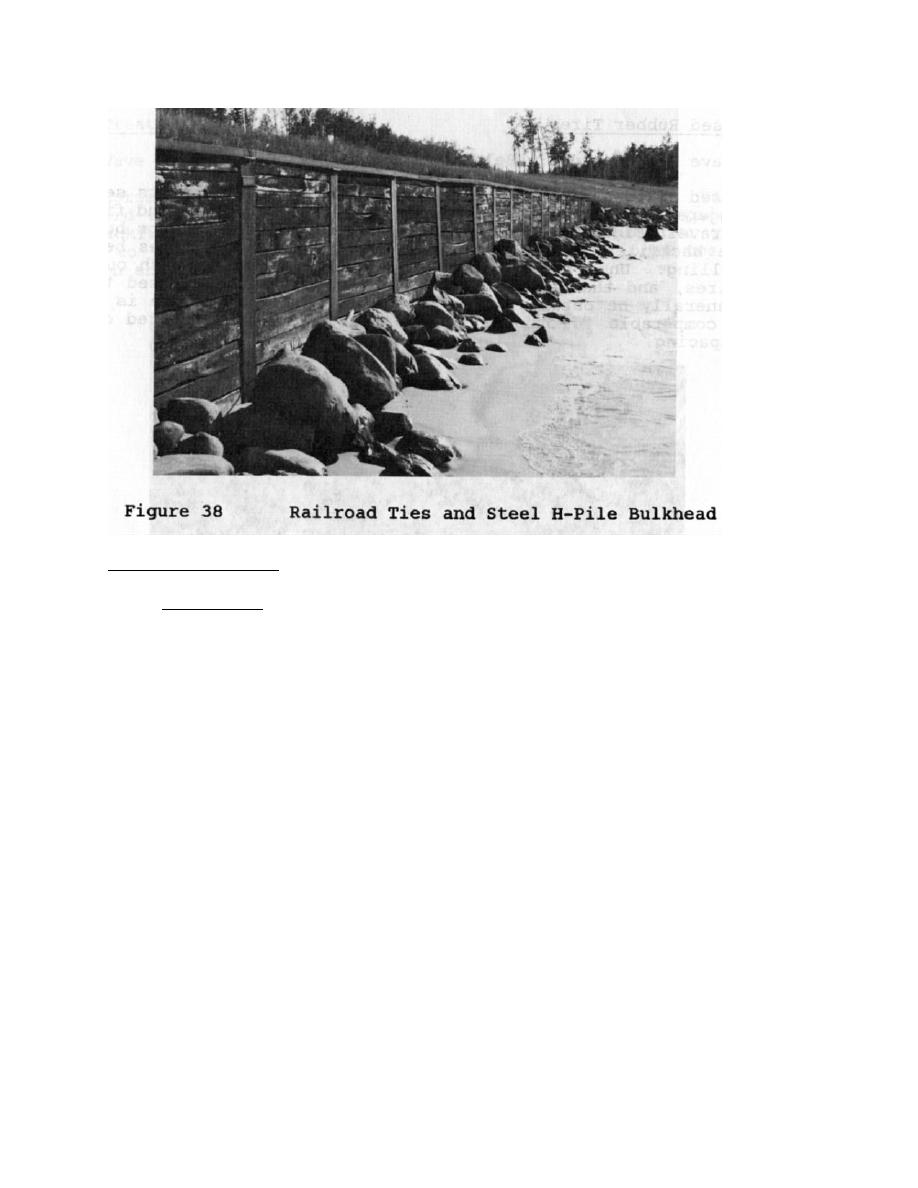
Miscellaneous Bulkheads
Longard Tubes
Wave Height Range: Below five feet.
A Longard tube is a patented, woven, polyethylene tube, filled with sand at installation (Figure
39) and available in 40- and 69-inch diameters, and lengths up to 328 feet. Like sand-filled bags,
performance depends on the fabric remaining intact, and the tube completely filled. When filled, the tube
is dense and heavy, yet flexible enough to settle if depressions occur. A properly installed Longard tube
is placed on a woven filter-cloth extending 10 feet seaward of the tube. A small 10-inch tube, factory
stitched to the seaward edge of the filter cloth, settles under wave action to provide toe protection.
The primary advantage of a Longard tube is the ease and speed with which it can be filled once
equipment and materials are in place. Repairs are possible using sewn-on patches. The major
disadvantage is its vulnerability to vandalism and damage by waterborne debris. A sand-epoxy coating
can be applied to dry tubes after filling to provide significantly greater protection by deterring vandals
and preventing puncture holes from enlarging. This coating cannot be applied to wet tubes. However,
the tube must not be allowed to roll after the coating is applied, as uncoated surface areas would then be
exposed, and distortion of the tube may cause the existing coating to flake off. other disadvantages are
that a large supply of good quality sand is required to fill the tube, patented filling equipment must be
used, and only specially licensed contractors can perform the work.
71



 Previous Page
Previous Page
